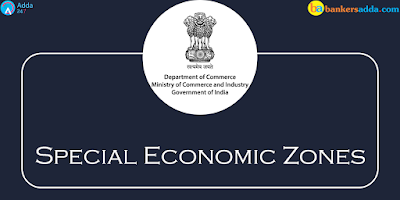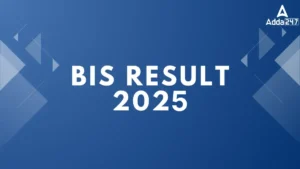With SBI PO, NIACL Assistant, BOB PO, Dena Bank PO, NICL AO and Bank of India, they all have a General Awareness section which is heavily filled with Banking Awareness Questions. Here we will discuss some terms related to Special Economic Zones (SEZs); it will help you prepare well for upcoming Banking or insurance Examinations.
Introduction of Special Economic Zones (SEZs)
India was one of the first in Asia to recognize the effectiveness of the Export Processing Zone (EPZ) model in promoting exports, with Asia’s first EPZ set up in Kandla, Gujarat in 1965. With a view to overcome the shortcomings experienced on account of the multiplicity of controls and clearances; absence of world-class infrastructure, and an unstable fiscal regime and with a view to attracting larger foreign investments in India, the Special Economic Zones (SEZs) Policy was announced in April 2000.
This policy intended to make SEZs an engine for economic growth supported by quality infrastructure complemented by an attractive fiscal package, both at the Centre and the State level, with the minimum possible regulations. SEZs in India functioned from 1.11.2000 to 09.02.2006 under the provisions of the Foreign Trade Policy and fiscal incentives were made effective through the provisions of relevant statutes.
To instill confidence in investors and signal the Government’s commitment to a stable SEZ policy regime and with a view to impart stability to the SEZ regime thereby generating greater economic activity and employment through the establishment of SEZs, a comprehensive draft SEZ Bill prepared after extensive discussions with the stakeholders. A number of meetings were held in various parts of the country both by the Minister of Commerce and Industry as well as senior officials for this purpose.
The Special Economic Zones Act, 2005, was passed by Parliament in May 2005 which received Presidential assent on the 23rd of June, 2005. The draft SEZ Rules were widely discussed and put on the website of the Department of Commerce offering suggestions/comments. Around 800 suggestions were received on the draft rules. After extensive consultations, the SEZ Act, 2005, supported by SEZ Rules, came into effect on 10th February 2006, providing for drastic simplification of procedures and for single window clearance on matters relating to central as well as state governments.
The main objectives of the SEZ Act are:
(a) Generation of additional economic activity
(b) Promotion of exports of goods and services;
(c) Promotion of investment from domestic and foreign sources;
(d) Creation of employment opportunities;
(e) Development of infrastructure facilities
Window SEZ approval mechanism has been provided through a 19 member inter-ministerial SEZ Board of Approval (BoA). The applications duly recommended by the respective State Governments/UT Administration are considered by this BoA periodically. All decisions of the Board of approvals are with consensus. The SEZ Rules provide for the different minimum land requirement for the different class of SEZs. Every SEZ is divided into a processing area where alone the SEZ units would come up and the non-processing area where the supporting infrastructure is to be created.
The SEZ Rules provide for:
(a) Simplified procedures for development, operation, and maintenance of the Special Economic Zones and for setting up units and conducting business in SEZs;
(b) Single window clearance for setting up of a SEZ;
(c) Single window clearance for setting up a unit in a Special Economic Zone;
(d) Single Window clearance on matters relating to Central as well as State Governments;
(e) Simplified compliance procedures and documentation with an emphasis on self-certification
Incentives and facilities offered to the SEZs
The incentives and facilities offered to the units in SEZs for attracting investments into the SEZs, including foreign investment, include:-
(a) Duty free import/domestic procurement of goods for development, operation and maintenance of SEZ units
(b) 100% Income Tax exemption on export income for SEZ units under Section 10AA of the Income Tax Act for first 5 years, 50% for next 5 years thereafter and 50% of the ploughed back export profit for next 5 years.
(c) Exemption from minimum alternate tax under section 115JB of the Income Tax Act.
(d) External commercial borrowing by SEZ units up to the US $ 500 million in a year without any maturity restriction through recognized banking channels.
(e) Exemption from Central Sales Tax.
(f) Exemption from Service Tax.
(g) Single window clearance for Central and State level approvals.
(h) Exemption from State sales tax and other levies as extended by the respective State Governments.




 GA Capsule for SBI Clerk Mains 2025, Dow...
GA Capsule for SBI Clerk Mains 2025, Dow...
 The Hindu Review October 2022: Download ...
The Hindu Review October 2022: Download ...
 BIS Result 2024-25 Out for ASO, JSA and ...
BIS Result 2024-25 Out for ASO, JSA and ...





